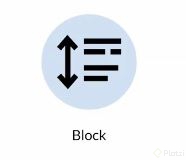Hey Platzinaut. 👩💻✨
My notes of the lesson. 👇
In this course you will learn the basic structure of a sentence.
How to put all your sentences together to form a paragraph and how to combine your paragraphs to create a complete text.
#NeverStopLearnig 🚀
Capitalization, Abbreviation, and Indentation.
Capitalization
Is when you write the first letter of a word in upper case and the remaining letters in lowercase. There are some basic rules for that. Let’s see the first one:
My name is Fernanda
My sister and I watch TV.
This is Mr. Jones.
I live in Bogotá, Colombia.
I am Colombian, and I speak Spanish.
Today is Sunday, February 14th. It’s Valentine’s Day!
Abbreviation
Abbreviations are the shortened form of a word, and we are going to start seeing two different types.
Acronym
We can form an acronym using the first letter of different words. You can say an acronym as a word. Examples:
Initialism
It is similar to an acronym. We also form an initialism using the first letter of other words. But the difference here is you cannot say an initialism as a word. In this case, you have to say a letter by letter like:
You can also form some abbreviations by removing some letters of one single word.
Mr. Jones.
Dr. Gonzalez.
5th Ave.
Main St.
10 am.
Jan.
Mon.
20 g.
80 oz.
In American English 🇺🇸
You normally put a period in the end of the abbreviation, like:
In British English 🇬🇧
You only use the period in the end of the abbreviation if the last letter of the abbreviation is different from the original word.
Paragraph Format
First-line Indent:
In this format, you have to leave a small space between the edge and the beginning of your text. You use this kind of format to write biographies, narratives and academic publications. This kind of format makes your reader read your text in a linear way.

Block
As the name says, we write our paragraphs in blocks, and instead of leaving a blank space in the edge of the paper, you are going to leave a blank space between paragraphs. This type of format gives the idea to your reader that all the information is inside each paragraph. Very common when you are writing guides or manuals.

Writing process
PARTS OF SPEECH
Types of sentences
A group of words, usually containing a verb, that expresses a thought in the form of a statement, question, instruction, or exclamation and starts with a capital letter when written
GO!
The shortest grammatically correct sentence in English. Is an example of a sentence using only one word.
I am
The shortest complete sentence in English. It is complete because contains a subject, “I”, and the verb “am”.
I like chocolate.
I don’t like chocolate.
Eat
Don’t eat!
Don’t you like chocolate?
Where is your house?
What a surprise!
How nice!
Structure
Simple:
Independent clause
Compound:
Independent clause + Independent clause
Clauses
A clause is a group of words containing a verb, a subject and an idea.
Independent Clause
Contains a subject
I drink coffe.
Mary and Ana study English.
Run-on sentence
We have a new student He is from Italy.
Combining sentences.
We have a new student. He is from Italy.
We have a new student; he is from Italy.
We have a new student, and he is from Italy.
Coordinating Conjuction
Combining sentences
I live in Colombia, and you live in Mexico.
John wants to play soccer, but he is sick.
Connectors
Connectors are linking words, we can use to connect other words, phrases and paragraphs.
Parallel structure
Is used when we write something in a series. The idea is to balance all the elements in this series, and we can use the parallel structure in different situations.
Verbs
Verbs + nouns
Noun + number
Subject matter
Punctuation
Paragraph Structure
We can compare a paragraph to a sandwick. It has different layers, but in the paragraph, these layers are the sentences. In a basic paragraph, there are three different types of a sentences.
Clear topic + Main idea
I love bananas because they are convenient, delicious, and nutritious.
What to avoid
Supporting Sentences
Can be examples of your topic. Can be a reason why you think like that; a description; some arguments; an they can be cause and effects, and so on. Remember, when you are going to start writing, you have to go through some stages.
The first one is the prewriting. In this stage, you should gather all the ideas about your main topic, and put them down on paper.
Bananas are convenient, delicious, and nutritious.
Concluding sentence
Can be the summary of your paragraph, your final thoughts, your personal opinion.
Checklist:
Personal Profile
Informal Email
Formal Email
Review
Biography
